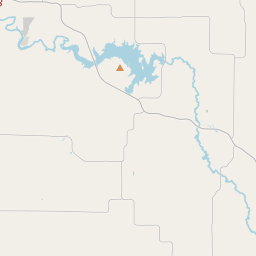Early Banking in Eastland













The evolution of Eastland banks reflects local economic conditions and global influences. Soon after the Texas and Pacific Railway reached town in October 1880, a Mr. Berry of Stephenville opened the first bank in Eastland in Jacob Alexander's dry goods store. Eastland National Bank began in the fall of 1890 on the square, with Major W.H. Parvin as president and John T. Yeargin as cashier. Eastland County Bank ran from the late 1890s to 1904 in the same location. City National Bank opened in 1905, with G.H. Connell as the first bank president and T.E. Downtain as vice-president.
First State Bank opened in 1909 as the first state-chartered bank in Eastland. The next surge in new banks followed discovery of the Ranger Oil Field in 1917. In two years, Eastland's population grew from 1,000 to 9,368, and banks in the county numbered eighteen. In 1919-21, First State Bank built a new headquarters on this site, designed by architect Henry T. Phelps. Oil production declined in the early 1920s, and First State absorbed smaller banks. City National Bank closed in 1921 after a brief incarnation as Security State Bank and Trust. First State Bank failed in January 1924, with Texas State Bank taking over the building and assets.
A few months after the stock market crash of 1929, the county's banks had decreased to seven and Texas State was Eastland's only bank. After a run on deposits on October 1, 1931, Texas State Bank closed its doors for good. The town was without a bank until a new Eastland National Bank opened on this site in November 1934, as the city and nation slowly emerged from the Great Depression with strengthened banking regulations and a more diverse economy. (2006)
As one of the most visible programs of the Texas Historical Commission (THC), historical markers commemorate diverse topics in Texas history, including: the history and architecture of houses, commercial and public buildings, religious congregations, and military sites; events that changed the course of local and state history; and individuals who have made lasting contributions to the state, community organizations, and businesses.
Texas is known for its love of football, and the state has produced many great football players, including legends like Tom Landry, Earl Campbell, and Vince Young.
The county's official establishment came in 1858, when Texas Legislature recognized it as a separate entity. The county was named after William M. Eastland, who fought in the Texan Revolution and served as a Texas Ranger. During the late 19th and early 20th centuries, Eastland County experienced significant growth and development thanks to the arrival of railroads, making it a crucial transportation hub for the surrounding regions.
The discovery of oil in the early 20th century also brought prosperity to Eastland County. The oil boom led to a population increase, as well as the growth of industrial and commercial sectors. However, the Great Depression of the 1930s had a devastating impact on the county, leading to a decline in population and economic activity.
In recent decades, Eastland County has worked to revive its economy and preserve its rich heritage. Today, the county is known for its thriving agricultural sector, including cattle farming and crop cultivation. The county also attracts tourists with its natural beauty, offering outdoor recreational activities such as fishing, hunting, and camping. Eastland County continues to embrace its history while looking towards a promising future.
Eastland County Timeline
This timeline provides a concise overview of the key events in the history of Eastland County, Texas.
- 1850 - Eastland County is established as a county in Texas.
- 1854 - The town of Palo Pinto is designated as the county seat.
- 1858 - Palo Pinto is abandoned, and the county seat is moved to Merriman.
- 1875 - Merriman loses the county seat status to Eastland.
- 1890 - The Texas Central Railroad arrives in Eastland, fueling growth and economic development.
- 1907 - The first oil well in Eastland County is drilled, leading to the rise of the oil industry in the area.
- 1920 - The Eastland City Dam is built, creating Lake Leon and providing a water source for the region.
- 1930 - The population of Eastland County reaches its peak, with over 30,000 residents.
- 1938 - Eastland County is severely affected by the devastating tornado outbreak known as the "Wichita Falls–East Texas Tornado Outbreak."
- 1950s - The decline of the oil industry and changes in agriculture lead to a population decrease in Eastland County.
- Today, Eastland County is a rural area with a diverse economy, including agriculture, oil and gas production, and tourism.